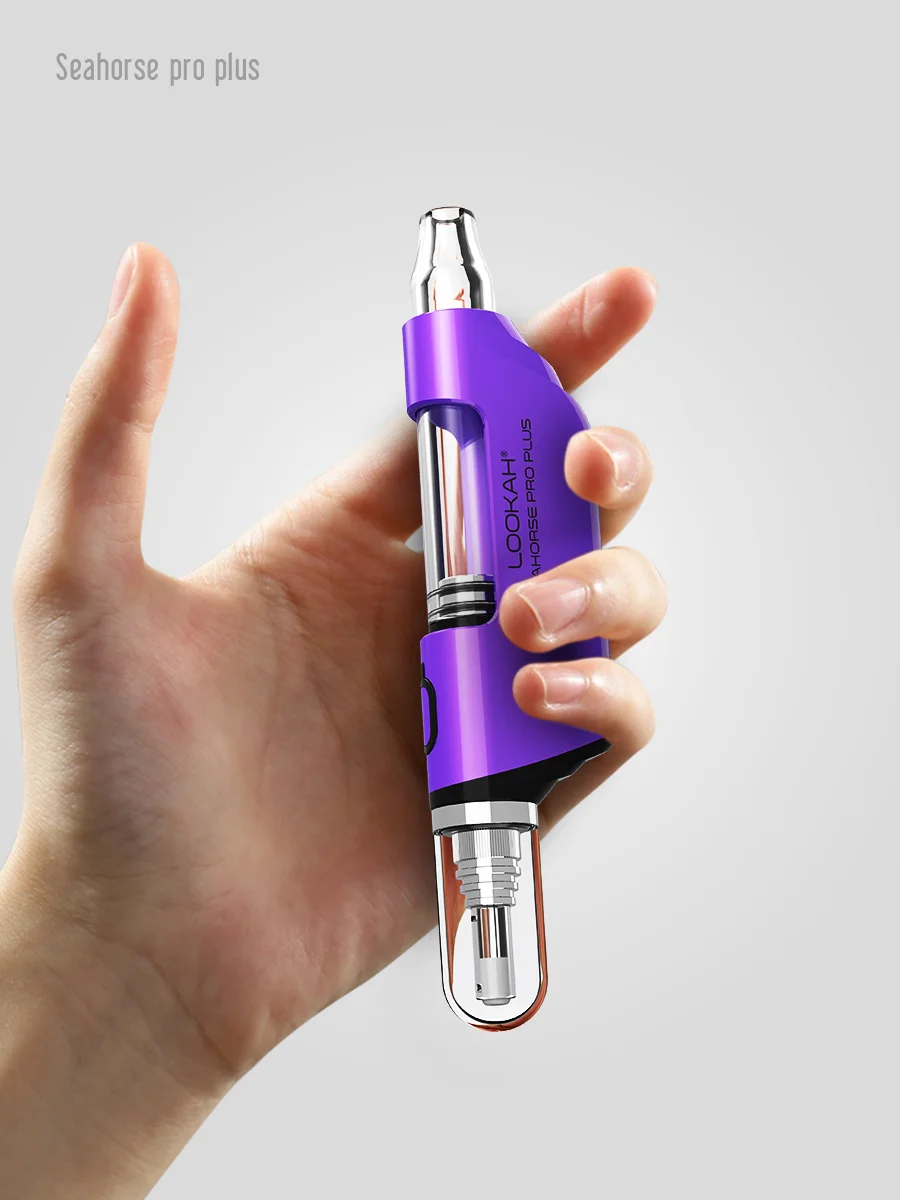

Building Your Dream sim tower: Tips and Strategies for Successful Management
Introduction to sim tower Gameplay
Simulating the complexities of vertical architecture and urban management, sim tower is a construction and management simulation game that invites players to dig deep into the intricacies of skyscraper development. Released in 1994, this engaging title has garnered a devoted following, allowing players to create, manage, and expand their towers into thriving megastructures. With a rich blend of strategic planning, resource management, and creative freedom, sim tower stands as a classic in the genre of simulation gaming.
What is sim tower?
At its core, sim tower is about building and managing a high-rise building, where players must make critical decisions regarding design, functionality, and the welfare of tenants and visitors. Players start with a basic layout and are tasked with constructing various types of facilities such as residential apartments, offices, shops, and entertainment venues. The game’s unique mechanics allow for a blend of strategic thinking with creative expression, making it accessible yet challenging.
Overview of Game Mechanics
Simulating realistic economic and social interactions, sim tower operates on a closed-loop system. Players must monitor aspects like monetary resources, tenant satisfaction, and building design. The game’s mechanics include:
- Resource Management: Players must manage finances efficiently, balancing expenditures with income generated from rents and services.
- Facility Placement: The placement of amenities—such as elevators, lobbies, and restaurants—can significantly affect the tower’s overall efficiency and appeal.
- Customer Satisfaction: Understanding tenant needs and ensuring amenities meet those needs will enhance satisfaction, which in turn boosts revenue.
- Expansion Strategies: Players can expand their towers vertically or horizontally, adapting their strategies to add more floors or amenities.
Why sim tower Stands Out
What sets sim tower apart from other construction simulations is its depth of gameplay and the freedom it provides. The game encourages players to experiment with different layouts and business models while providing a rich simulation environment. The nostalgic aesthetic combined with sophisticated mechanics makes sim tower not only a game but an exploration of urban and economic management.
Setting Up Your First sim tower
Initial Planning and Budgeting
Before starting with your first tower in sim tower, thorough planning is essential. Understanding your available resources and setting a budget will pave the way for constructive growth. Begin with a comprehensive assessment of:
- Starting Capital: Knowing how much you have available will help you prioritize essential construction and expenditures.
- Resource Allocation: Determine how much to invest in key facilities like elevators and lobbies versus smaller businesses.
- Long-term Goals: Set ambitious but achievable goals, whether it’s reaching a specific height, building a five-star establishment or maximizing tenant satisfaction.
Choosing the Right Facilities
Choosing which facilities to include is a critical aspect of sim tower gameplay. The array of options requires careful thought to ensure a balanced mix that caters to all potential tenants. Consider the following:
- Residential Spaces: Investing in apartments can provide a steady flow of income. Size and type should cater to your target demographic.
- Commercial Areas: Offices and shops generate significant revenue and add vibrancy to your tower.
- Recreational Facilities: Adding gyms, pools, or lounges will enhance tenant satisfaction and can justify higher rents.
Strategies for Efficient Layout
Layout plays a pivotal role in the success of your skyscraper. A strategic arrangement can minimize travel time for tenants and maximize ease of access to facilities. Here are some strategies to consider:
- Elevator Placement: Positioning elevators close to high-density areas ensures efficient access and reduces tenant frustration.
- Zoning: Create zones for different functions, such as residential on lower floors and commercial on higher floors, to separate noise and amenities.
- Accessibility: Ensure all facilities are easily reachable, minimizing wait times and enhancing the overall tenant experience.
Advanced Management Techniques in sim tower
Maximizing Revenue through Smart Decisions
Revenue maximization in sim tower involves various strategies rooted in smart financial decisions. Prioritize the following techniques:
- Dynamic Pricing: Adjust rental prices based on demand and occupancy levels. Regularly monitoring market trends will allow you to optimize income.
- Service Offerings: Adding premium services such as valet parking or concierge services can warrant higher rents and occupancy rates.
- Strategic Marketing: Invest in promotional channels within the game to attract tenants to your tower, ensuring high occupancy levels are maintained.
Balancing Residential and Commercial Spaces
Striking a balance between residential and commercial spaces is vital for sustaining income flow. An optimal mix serving both operational needs and enhancing the tenant’s living experience will lead to greater success. Consider these insights:
- Tenants’ Needs: Analyze tenant feedback and adjust your offerings to ensure both residential and commercial spaces are appealing and functional.
- Facility Proximity: Position commercial areas alongside residential ones to enhance convenience for tenants, leading to improved happiness and lower turnover.
- Diverse Offerings: Offer a range of options to attract different demographics, from luxury apartments to simpler accommodations.
Staff Management and Customer Satisfaction
Efficient staff management is crucial in sim tower, affecting tenant satisfaction and operational productivity. Keeping a close eye on employee needs and welfare will enhance performance:
- Training Programs: Invest in training staff to enhance service quality and efficiency.
- Feedback Mechanism: Implement systems for tenants to provide feedback about the services and facilities, allowing for quick adjustments.
- Work-Life Balance: Foster a positive work environment that promotes staff satisfaction, which indirectly influences tenant happiness.
Common Challenges in sim tower
Handling Emergency Situations
In any bustling tower, emergencies are no surprise. Whether it’s a fire alarm or a sudden influx of tenants, being prepared is key. Strategic planning includes:
- Emergency Protocols: Develop clear protocols for various emergencies, ensuring that staff is trained to handle situations calmly and effectively.
- Resource Availability: Always keep emergency resources, such as fire extinguishers or first-aid kits, readily available and staff trained on their usage.
- Tenant Communication: Clear communication methods via alerts or signage should be maintained so that tenants know how to respond swiftly in emergencies.
Reducing Operational Costs
To maintain a sustainable tower operation, actively look for ways to reduce costs without compromising service quality. Here are several methods:
- Energy Efficient Solutions: Implement energy-saving solutions like LED lights and solar panels that reduce long-term expenses.
- Regular Maintenance: Preventive maintenance can extend the life of facilities and equipment, minimizing unexpected repair costs.
- Outsourcing: Consider outsourcing certain services that may be more expensive to handle internally.
Adapting to Player Feedback
Building a great tower is about adapting and evolving. Player feedback can be a powerful tool for improving gameplay. To incorporate this effectively:
- Feedback Channels: Employ various methods (surveys, forums) to encourage feedback from players.
- Iterative Changes: Implementing minor adjustments quickly based on feedback can significantly enhance player satisfaction and engagement.
- Monitoring Trends: Keep an eye on community discussions regarding the gameplay experience to identify recurring issues that can be addressed.
The Future of sim tower
Community Interaction and Player Creativity
One of the most promising aspects of sim tower’s longevity is its dedicated community of fans. Online forums and social media provide platforms for players to share tips and experiences:
- User-Created Content: Encouraging creativity among players can lead to the development of exciting mods or custom scenarios.
- Collaboration Spaces: Develop community spaces where players can collaboratively brainstorm or troubleshoot challenges, fostering a sense of camaraderie.
Potential Updates and Expansions
As with any successful game, the opportunity for updates and expansions is vast. Incorporating player ideas can draw renewed interest and engagement:
- New Facilities: Regularly introducing new building types or amenities can enhance gameplay and keep players engaged.
- Seasonal Events: Hosting thematic events can draw players back, fostering a renewed interest in gameplay.
Keeping the Game Relevant
In a rapidly changing gaming landscape, maintaining relevance is crucial. This can involve:
- Technology Integration: As gaming technology advances, integrating new features, such as improved graphics or AI systems, can enhance the player experience.
- Marketing Strategies: Employing modern marketing strategies can capture a new audience who may benefit from innovations in gameplay.

Mastering the Dune 2 Game: Strategies, Tips, and Essential Insights
Introduction to the Dune 2 Game
The world of gaming has given rise to numerous franchises, but few have captured the imagination of players as much as the dune 2 game. Released in the early 1990s, this game is often regarded as the father of real-time strategy (RTS) games. As you traverse through the arid terrains of the desert planet Arrakis, or Dune, you will discover robust gameplay mechanics that have influenced countless titles that followed. This article aims to delve deeper into the intricacies of Dune 2, exploring its gameplay, strategies, character analysis, community insights, and more.
Overview of Gameplay Mechanics
At its core, Dune 2 utilizes a blend of resource management, strategic planning, and real-time combat. Players choose from one of three factions—Atreides, Harkonnen, or Ordos—each with unique strengths and tactical advantages. The gameplay unfolds across a series of missions where players gather resources, construct bases, and engage in battles against enemy forces. The simplicity of the mechanics belies the strategic depth available to players, making every decision—from unit selection to resource allocation—crucial for success.
Setting the Scene: Dune 2’s World
The narrative of Dune 2 is closely tied to the rich lore of the Dune universe created by Frank Herbert. Set on the desert planet of Arrakis, players must navigate a harsh environment teeming with dangers, including sandworms and hostile rival factions. The game beautifully integrates environmental factors into the gameplay, compelling players to consider the terrain’s impact on strategy. Whether building a base on a rocky outcrop or deploying units in a sandy dune, recognizing the landscape’s nuances is essential for effective gameplay.
Why Dune 2 is a Classic
Dune 2 is often credited with laying the groundwork for the RTS genre, establishing conventions that would define the genre for years to come. The combination of fast-paced strategic gameplay, unique faction attributes, and engaging resource management creates a compelling gaming experience. Players who experienced Dune 2 often recall it as more than just a game; it’s a formative experience that molds one’s appreciation for strategy gaming. Its legacy continues, evident in modern titles that bear the fingerprints of this classic.
Understanding Dune 2 Game Strategies
Many players find that developing effective strategies enhances their experience in Dune 2 immensely. Winning not only requires individual skill but also understanding overarching strategies that can be implemented throughout the game.
Building Your Base for Success
Base construction is fundamental in Dune 2. Players must prioritize their base location, ensuring that it offers proximity to vital resources like spice and water. Initial decisions must be made regarding defensive structures, resource collectors, and unit production facilities. Effective players often scout the area to determine the best location for their base, ensuring that it can sustain both offense and defense.
Resource Management Techniques
The strategic importance of resource management cannot be overstated. Spice is the primary resource in Dune 2, and collecting it efficiently is critical for building and maintaining your military. Players must balance between expanding production capabilities and maintaining enough military force to defend against enemy incursions. Utilizing sandworms becomes a cunning strategy for controlling resource hubs, creating a sense of fear among rival factions. Resource scarcity creates tension, forcing players to make difficult decisions that can significantly impact their game’s outcome.
Combat Strategies and Tactics
Combat in Dune 2 reflects its real-time nature, requiring players to make quick decisions while deploying units effectively. Understanding unit strengths—such as the Atreides’ mobility versus the Harkonnen’s power—can make all the difference. Additionally, players must learn to utilize terrain effectively, leveraging high ground and obstacles for defensive advantages. Tactics like flanking and ambush can turn the tide of battle, allowing for strategic victories even when outnumbered.
Character and Faction Analysis in Dune 2
Each faction in Dune 2 offers different gameplay styles and unit types, adding layers of strategy and depth to player experiences. Understanding these differences is key to mastering the game.
Strengths and Weaknesses of Factions
The dynamic nature of factional strengths and weaknesses invites players to explore various strategies, offering significant replayability. The Atreides excel in mobility and stealth, making them formidable in reconnaissance and rapid assaults. The Harkonnen have a more brute-force approach, emphasizing high damage output with their units. The Ordos, often underestimated, bring unique technologies that can disrupt opponents. Recognizing these traits equips players with the tools needed to anticipate enemy moves and strategize effectively.
Choosing the Right Units for Battle
Unit selection is critical in Dune 2. Players have various units at their disposal, each serving distinct roles. From fast-moving raiders to heavily armored tanks, the right mix enhances strategic opportunities. Understanding combinations—such as pairing reconnaissance units with heavy artillery—can create an unstoppable force on the battlefield. Players must adapt their unit composition to address the current state of the game and the moves of their opponents, ensuring they remain unpredictable and decisive.
Character Development and Upgrades
Although Dune 2 does not focus on character leveling as found in role-playing games, players do influence the effectiveness of their units through smart decision-making. Limiting losses by avoiding reckless maneuvers ensures units can gather experience. Strategic unit upgrades become available over time, allowing players to modify their army to meet evolving threats. While upgrades can occasionally tip the balance in favor of one faction, understanding when to invest the resources is key to maintaining an edge over opponents.
Common Challenges in the Dune 2 Game
While the Dune 2 game offers thrilling experiences, players often encounter challenges that require keen problem-solving skills and adaptability.
Overcoming Resource Scarcity
Resource scarcity is a persistent issue in Dune 2. Players often find themselves under pressure to collect spice while simultaneously dealing with enemy attacks. Balancing resource allocation with building defenses becomes vital. Some players may choose to expand aggressively, while others prefer to consolidate power before venturing beyond their initial bases. Successful strategies often involve scouting for hidden spice deposits and negotiating map control while being responsive to threats.
Handling Enemy Attacks Effectively
Enemy attacks can be relentless, adding an intense layer of urgency to Dune 2. Being prepared requires players to establish robust defenses while maintaining enough offensive capacity to deter opponents. Early detection of enemy movements through scouting can help anticipate attacks, affording players time to build defenses or counterattacks. Understanding the weaknesses of enemy units can also provide players with opportunities to set effective traps or ambushes.
Adapting to Changing Game Dynamics
The dynamic nature of Dune 2 means that players must continually adapt their strategies. Changes may arise from unit losses, shifts in available resources, or the introduction of new tactics from opponents. Flexibility is crucial; sticking rigidly to a strategy can lead to failure. Adapting combat strategies to surprise opponents can turn the tide of the game. Moreover, staying informed about enemy faction strengths and technological advances can facilitate timely adjustments to unit deployment and resource management.
Community Insights and Player Tips for Dune 2 Game
The community surrounding Dune 2 provides a wealth of knowledge for both veteran players and newcomers alike. Engaging with this community can yield valuable insights that enhance gameplay.
Top Strategies from Seasoned Players
Seasoned players often share strategies that might not be immediately apparent. For instance, utilizing terrain to your advantage, employing hit-and-run tactics, and pooling resources with allies can amplify the effectiveness of gameplay. Additionally, studying enemy behavior can lead to insights that unlock counter-strategies. Getting involved in community discussions can offer players innovative strategies and a fresh perspective on popular methods.
Online Resources and Forums
Several online resources and forums exist where players can exchange tips, strategies, and gameplay critique. These platforms foster collaboration among players, allowing them to enhance their skills while discovering new techniques. Engaging with these communities also provides opportunities to form alliances and practice competitive play, enabling a deeper understanding of the game.
Creating a Personal Play Style
Ultimately, developing a personal play style is crucial for success in Dune 2. As players absorb strategies from others, they should experiment with different approaches and refine their methods to align with individual strengths and preferences. Whether favoring aggressive play or strategic defense, creating a distinct style contributes to a more enjoyable and fulfilling experience as players journey through the intricacies of Dune 2.
Conclusion
Engaging with the Dune 2 game transcends mere gameplay; it’s about immersing oneself in a richly crafted universe that has influenced generations of gamers. By mastering its mechanics, understanding faction strengths, and developing appropriate strategies, players can navigate the challenges presented by this iconic title. Dune 2 offers a rewarding experience that encourages both competitive play and collaboration, making it a cornerstone of the RTS genre. Experimenting with different styles and pooling knowledge with a vibrant community ensures that players not only survive but thrive in the harsh world of Arrakis.

Effective Strategies for Healing Trauma and Reclaiming Your Life
Understanding Healing Trauma
Healing trauma is a vital process that requires a comprehensive understanding of its nature, sources, and impact on individuals. Trauma can stem from various experiences, affecting individuals profoundly and leading to long-term psychological effects. In this detailed exploration, we will delve into the definition of healing trauma, the common sources of trauma, and how it can influence mental health. This foundational knowledge is crucial for anyone on the journey towards recovery.
Defining Healing Trauma
At its core, healing trauma involves addressing and resolving the psychological and emotional distress caused by traumatic experiences. This process is not merely about moving on but engaging deeply with the feelings and memories associated with trauma. Healing trauma allows individuals to regain control over their lives and develop resilience against future adversities. By employing various therapeutic techniques and self-care strategies, individuals can rebuild their sense of self and reconnect with their emotional well-being. Understanding this process is the first step towards fostering a culture of healing and support.
Common Sources of Trauma
Trauma can manifest from a myriad of sources, each unique to the individual. Common sources of trauma include:
- Physical Abuse: Experiencing physical harm from another person can lead to deep-seated trauma.
- Emotional Abuse: Manipulative tactics or verbal assault can have lasting effects on mental health.
- Sexual Assault: Incidents of sexual violence often result in significant trauma that requires comprehensive healing strategies.
- Accidents: Sudden, life-altering events like car accidents can create trauma that pervades a person’s entire life.
- Natural Disasters: Events such as earthquakes, floods, or hurricanes can induce trauma through the loss of security and loved ones.
- Military Combat: Serving in war zones can expose individuals to experiences that lead to PTSD and other trauma-related disorders.
The impact of these sources varies, often influenced by individual circumstances, history, and support systems available to the affected person. Recognizing and validating these experiences are crucial steps in the path toward healing.
The Impact of Trauma on Mental Health
The effects of trauma on mental health can be profound and far-reaching. Individuals who have experienced trauma may struggle with conditions such as anxiety, depression, and PTSD (Post-Traumatic Stress Disorder). Symptoms may include:
- Intrusive Memories: Recurrent, unwanted thoughts about the traumatic event.
- Emotional Numbing: Difficulty expressing emotions or feeling disconnected from oneself or surroundings.
- Avoidance Behaviors: Steering clear of situations or conversations that remind the person of the trauma.
- Hyperarousal: Heightened state of anxiety leading to irritability, difficulty sleeping, and a persistent sense of danger.
Understanding these impacts allows for better-targeted approaches in healing trauma, tailor-fit to address the unique needs of those affected.
Key Approaches to Healing Trauma
As individuals work through the often complex process of healing, several approaches can provide crucial support and guidance. Below are some of the key methodologies to healing trauma that have proven effective in various contexts.
Therapeutic Techniques
Therapeutic interventions are central to healing trauma. Various forms of therapy can be deployed to facilitate the healing process:
- Cognitive Behavioral Therapy (CBT): This structured therapy helps individuals identify and alter negative thinking patterns associated with trauma.
- Eye Movement Desensitization and Reprocessing (EMDR): EMDR assists individuals in processing traumatic memories by utilizing guided eye movements to lessen the emotional charge of the memories.
- Somatic Experiencing: Focused on the body, this approach encourages individuals to experience their physical sensations and movements, which can unlock trauma stored in the body.
- Dialectical Behavior Therapy (DBT): This therapy is particularly effective for individuals with intense emotions, teaching skills in mindfulness, emotional regulation, and distress tolerance.
Choosing the appropriate therapy depends on individual preferences and the nature of the trauma, making it essential to consult with a mental health professional for personalized guidance.
Self-Care Practices for Healing Trauma
Self-care plays a pivotal role in the healing process. Simple yet effective practices can significantly influence mental health and emotional well-being:
- Physical Activity: Engaging in regular exercise releases endorphins, which can help alleviate symptoms of depression and anxiety.
- Mindfulness and Meditation: These practices can help individuals stay grounded and clear their minds of distressing thoughts linked to trauma.
- Proper Nutrition: Eating a balanced diet contributes to overall health and can impact mood stability.
- Sleep Hygiene: Establishing a consistent sleep routine can improve overall mental health and resilience.
- Creative Expression: Activities such as art, music, or journaling can provide a safe outlet for emotions tied to trauma, aiding in release and understanding.
Incorporating these self-care strategies into daily life can facilitate healing and boost resilience against future challenges.
Building a Support Network
No one should navigate the journey of healing trauma alone. Building a strong support network is essential in recovery:
- Friends and Family: Maintaining open communication with trusted individuals allows for emotional expression and support.
- Support Groups: Connecting with others who have had similar experiences can diminish feelings of isolation and stigma, fostering a sense of community.
- Professional Support: Working with therapists, counselors, or support groups specialized in trauma recovery can provide additional layers of support.
Encouragement and a sense of belonging from a supportive network can bolster the healing process, reminding individuals they are not alone in their struggles.
Mindfulness and Its Role in Healing Trauma
Mindfulness has emerged as a powerful tool in healing trauma. It allows individuals to stay present, making it easier to process traumatic experiences without becoming overwhelmed. This section will explore the different strategies and the benefits that mindfulness and meditation offer in the journey of healing.
Practicing Mindfulness Techniques
Mindfulness involves paying attention to the present moment without judgment. Practicing mindfulness entails incorporating techniques such as:
- Breath Awareness: Focusing on breath can ground individuals, helping to alleviate anxiety and stress linked to trauma.
- Body Scan: This technique involves systematically focusing on different body parts, increasing awareness and releasing tension associated with trauma.
- Mindful Walking: Walking with awareness to the sensations of the ground underfoot can help individuals feel more connected to their body and environment.
Regular practice of these techniques can cultivate resilience, emotional control, and a greater sense of peace.
Benefits of Meditation in Healing Trauma
Meditation complements mindfulness practices by providing structured techniques for relaxation and introspection. The benefits of incorporating meditation into trauma healing include:
- Reduced Anxiety and Stress: Meditation can help calm the nervous system, lessening the intensity of anxiety and stress responses.
- Emotional Regulation: Regular meditation practice encourages individuals to acknowledge and accept their emotions without reacting impulsively.
- Improved Focus and Clarity: Meditation sharpens concentration, aiding individuals in processing their thoughts and feelings related to trauma more effectively.
- Increased Self-Awareness: Taking time to reflect leads to a greater understanding of how trauma affects one’s life, paving the way for healing.
These benefits create a conducive environment for healing trauma, allowing individuals to cultivate a clearer understanding of their experiences.
Mind-Body Connection: Healing Through Awareness
The mind-body connection plays a critical role in healing trauma. By recognizing that emotional distress can manifest as physical symptoms, individuals can work towards holistic healing. Techniques that bridge this connection include:
- Yoga: Practicing yoga encourages physical movement and breathing, which can alleviate symptoms of trauma stored in the body.
- Art Therapy: Engaging in creative processes allows individuals to express emotions and thoughts they may find difficult to verbalize.
- Somatic Practices: These approaches focus on bodily sensations to unlock and process trauma stored within the body.
Through the mind-body connection, individuals can foster healing from trauma on both emotional and physical levels, leading to a more integrated recovery.
Stages of Trauma Recovery
The recovery from trauma is not a linear process; it consists of various stages that individuals may navigate differently. Understanding these stages can illuminate the path towards healing.
Understanding the Recovery Process
The recovery process typically unfolds in several key stages:
- Impact Stage: This initial phase is characterized by confusion and disorientation, where individuals are heavily affected by the trauma.
- Recoil Stage: Here, individuals confront the effects of trauma, experiencing a range of emotions including anger and sadness.
- Reconstruction Stage: In this phase, individuals begin to formulate a new sense of self, integrating the trauma experience into their life narrative.
- Integration Stage: Ultimately, individuals reach a level of acceptance and understanding of their experience, allowing them to move forward with their lives.
Recognizing these stages can help individuals and their support networks understand that recovery takes time and requires patience and self-compassion.
Overcoming Challenges in Healing Trauma
Healing trauma presents unique challenges, including:
- Fear of Vulnerability: Many individuals fear opening up about their trauma, as it requires exposing their deepest wounds.
- Stigma and Shame: Societal stigma surrounding trauma can lead to feelings of shame and isolation.
- Dissociation: Some may detach from their emotions or body as a defense mechanism, making it challenging to confront the trauma.
To overcome these challenges, individuals can engage in gradual exposure practices, build trust with supportive individuals, and access professional help when needed. Realizing that healing is a journey can foster resilience in the face of obstacles.
Recognizing Progress in Recovery
As individuals navigate through the various stages of recovery, recognizing and celebrating progress is vital:
- Emotional Awareness: Acknowledgment of emotions and how they relate to the trauma is a positive sign of progress.
- Increased Resilience: Signs of improved coping strategies indicate movement towards better emotional health.
- Open Communication: An ability to share feelings and thoughts about the traumatic experience signifies growth.
Encouragement and reinforcement from peers and professionals can enhance the sense of progress, promoting continued growth and healing.
Resources for Continued Support in Healing Trauma
As the journey of healing trauma unfolds, various resources can provide necessary support and education. Individuals are encouraged to incorporate these valuable materials into their healing process.
Books and Educational Materials
Reading literature on trauma can offer insights and personal anecdotes that facilitate understanding and growth in the healing experience. Key books include:
- Healing Trauma: A Pioneering Program for Restoring the Wisdom of Your Body by Peter Levine, which discusses how trauma impacts the body and how to unlock the healing process.
- The Body Keeps the Score by Bessel van der Kolk, which explores the profound impact of trauma on physical and mental health.
These resources can inform individuals about their experiences and offer practical techniques for healing.
Online Support Communities
Connecting with online support communities can empower individuals to share their experiences and advice, while also fostering a sense of belonging. These platforms can include forums, Facebook groups, and dedicated websites focused on trauma recovery.
Finding Professional Help
Professional support is instrumental in the healing process. Seeking out qualified mental health professionals specialized in trauma can lead to tailored treatment plans. Individuals are encouraged to explore various options such as therapy, counseling, and workshops that focus on trauma recovery. Utilizing resources such as therapist directories and local mental health services can help in finding the right support.
In conclusion, healing trauma is a complex journey encompassing various techniques, stages, and support networks. Understanding the intricacies of trauma and the multifaceted approaches available for healing can empower individuals towards recovery. By fostering resilience, building connections, and seeking knowledge, individuals can reclaim their lives and pave the way for a hopeful future.

Effective Strategies for Dealing with Grief: Finding Comfort and Connection
Understanding Grief and Its Impact
Defining Grief: What Is It?
Grief is a profound emotional response to loss, primarily associated with the death of a loved one. However, it can also be triggered by significant life changes, such as the end of a relationship, loss of a job, or even the loss of a cherished pet. This complex emotion encompasses a wide range of feelings, such as sadness, anger, confusion, and despair. Grief is not a linear process; it affects each individual differently and can vary greatly in intensity and duration.
Understanding the nature of grief is crucial for healing. As many resources suggest, one effective strategy for dealing with grief is to acknowledge these emotional experiences as normal reactions to loss, rather than suppressing them. This acknowledgement helps facilitate a healthy grieving process, allowing individuals to navigate their emotions and experience the healing that follows.
Common Symptoms and Reactions to Loss
Grief manifests in various ways, with symptoms that can be emotional, physical, and behavioral. Emotionally, individuals may experience profound sadness, anger, confusion, or even guilt. Physically, grief can lead to symptoms such as fatigue, headaches, and changes in appetite or sleep patterns. Behaviorally, one might withdraw from social interactions, exhibit restlessness, or focus excessively on the loss. Recognizing these symptoms is vital for both the grieving individual and their support network, as they can indicate the intensity and complexity of the grieving process.
The Stages of Grief: A Closer Look
One popular framework for understanding grief is David Kübler-Ross’s five stages: denial, anger, bargaining, depression, and acceptance. While not necessarily linear, these stages represent common emotional responses that many people experience when faced with loss.
- Denial: A defense mechanism that buffers the immediate shock of the loss, denying its finality.
- Anger: The response may be directed towards the deceased, oneself, others, or even the world.
- Bargaining: Individuals may find themselves negotiating for more time or looking for ways to turn back the clock.
- Depression: This stage is often marked by profound sadness, as the reality of the loss sets in.
- Acceptance: This final stage involves coming to terms with the loss, allowing individuals to move forward while still cherishing memories.
Understanding these stages can provide a framework for individuals going through grief, helping them recognize their experiences as part of a larger process of healing.
Healthy Ways to Cope with Grief
Affirming Your Emotions: Accepting Grief
One of the most constructive ways to cope with grief is to accept and validate the emotions that arise. Suppressing feelings can prolong the grieving process and lead to complicated grief. Allowing oneself to feel sad, angry, or confused is essential. Techniques such as journaling or talking to supportive friends can help articulate these emotions. Furthermore, engaging with grief support resources – whether books, articles, or professional counseling – can provide invaluable insights into the complexities of one’s feelings.
Finding Support: Connecting with Loved Ones
Isolation can exacerbate feelings of grief, making it crucial to seek support from loved ones. Sharing feelings and memories can provide comfort and remind individuals that they are not alone in their experience. Support groups, whether online or in-person, can also connect individuals who are facing similar challenges, fostering understanding and shared healing.
Connections with friends and family can help reinforce the bonds that exist despite the loss, providing emotional nourishment while working through grief.
Practicing Self-Care During the Grieving Process
In times of grief, self-care is often neglected. However, maintaining physical health is essential for managing emotional health. Regular exercise, a nutritious diet, and adequate sleep can greatly improve mood and energy levels. Engaging in mindfulness practices, such as yoga or meditation, can also reduce anxiety and help individuals stay grounded in the present moment.
Self-care should not be seen as a luxury but as an essential part of the grieving process. Establishing a routine that incorporates time for relaxation, hobbies, and social activities can be beneficial as individuals navigate their grief journey.
Overcoming Challenges While Dealing with Grief
Dealing with Complicated Grief
Complicated grief occurs when the grieving process becomes prolonged or remains unresolved, interfering significantly with daily life. Signs include persistent yearning for the deceased, intense sorrow, and difficulty engaging with life. Recognizing the difference between normal grief and complicated grief is crucial, as the latter may benefit from professional help. Therapeutic interventions, such as cognitive behavioral therapy (CBT) or prolonged exposure therapy, can provide relief and aid in processing emotions related to loss.
Recognizing When to Seek Professional Help
While many can navigate grief with the support of loved ones, others may require professional intervention. Signs that indicate the need for professional support include an inability to function in daily life, the emergence of anxiety or depression, or feelings of hopelessness. Seeking help is not a sign of weakness but a courageous step toward healing. Mental health professionals can provide individualized strategies and therapies tailored to one’s grieving process.
Addressing Stigma Around Grief in Society
In many cultures, there exists a stigma associated with grief where individuals feel pressured to “move on” quickly. This societal expectation can lead to feelings of isolation and guilt in those who are grieving. Addressing this stigma involves fostering open dialogues about grief and loss, normalizing the experience of grief and its duration. Creating safe spaces for conversations about loss can help individuals feel validated in their experiences and encourage healthier grieving practices within communities.
Practical Tools and Techniques for Grieving
Mindfulness and Meditation for Grief
Mindfulness practices, such as meditation and breathing exercises, can provide grounding during times of intense emotion. Engaging in mindfulness allows individuals to acknowledge their feelings without judgment, fostering a sense of calm and connection to the present. Guided meditation apps and online resources can help teach these techniques, making them accessible for individuals seeking solace during grief.
Creative Expressions: Journaling and Art Therapy
Creative outlets can serve as powerful tools for processing grief. Journaling is an effective method for expressing thoughts and feelings, allowing individuals to articulate their experiences and memories surrounding their loss. Similarly, art therapy provides a space for non-verbal expression, facilitating the exploration of emotions through various mediums, such as painting or sculpting. Both methods are beneficial for individuals who struggle to articulate their feelings verbally.
Participating in Support Groups and Workshops
Engaging in support groups or workshops can significantly enhance the grieving process. These settings provide opportunities for shared experiences and can help individuals feel less isolated in their grief. Participants can learn coping strategies from each other and receive guidance from facilitators. Many organizations offer grief support workshops, focusing on various aspects of coping, healing, and moving forward.
Moving Forward: Embracing Life After Loss
Creating New Memories While Honoring the Past
Moving forward after loss does not mean forgetting the loved ones who have passed. Finding ways to honor their memory while creating new experiences is critical for healing. This can include traditions that celebrate their life, such as commemorating birthdays or anniversaries in meaningful ways, or integrating activities once enjoyed together into one’s routine.
Making new memories helps reframe the narrative surrounding loss—from solely mourning what has been lost to cherishing what was shared.
Establishing New Routines and Connections
Establishing new routines can aid in the transition to life after loss. Whether it involves exploring new hobbies, volunteering, or forming new social connections, these activities can reinvigorate a sense of purpose and community. Creating a structure in daily life can also provide a sense of normalcy, helping individuals navigate their new reality.
Resilience: Growing Through Grief
Grief can indeed be a powerful catalyst for personal growth. Many individuals find that through processing their grief, they develop greater resilience, empathy, and a renewed appreciation for life. Embracing the lessons learned and the strength gained can empower individuals to face future challenges with a newfound perspective. Although the journey through grief may be wrought with difficulty, it can ultimately lead to a deeper understanding of oneself and one’s connections with others.

Understanding Attachment Theory Coaching: Building Stronger Relationships
The Basics of Attachment Theory Coaching
Attachment theory is a psychological framework that focuses on the ways in which humans connect with one another. It describes how these connections can influence our relationships and emotional well-being throughout our lives. For those seeking to improve their relationships, understanding attachment theory provides a roadmap for personal growth and meaningful connections. Coaching derived from this theory, particularly involving an attachment theory coach, can help individuals navigate the complexities of their attachment styles and enhance their relationship dynamics.
What is Attachment Theory?
Attachment theory was first introduced by psychologist John Bowlby in the mid-20th century. The central idea is that the bonds formed with primary caregivers in childhood shape an individual’s expectations and experiences in relationships throughout their life. Bowlby proposed that these attachment styles are critical for emotional development, influencing how people experience love, trust, and intimacy.
There are four primary attachment styles identified in adults:
- Secure Attachment: Individuals with this attachment style are comfortable with intimacy and independence, promoting healthy relationships.
- Anxious Attachment: Those with an anxious attachment style often seek validation and reassurance, fearing abandonment and displaying clingy behavior.
- Avoidant Attachment: People with avoidant attachment tend to distance themselves from partners, prioritizing self-sufficiency over closeness.
- Disorganized Attachment: This style is characterized by a mix of anxious and avoidant behaviors, often resulting from trauma in early relationships.
Importance of Attachment Styles in Relationships
Understanding your attachment style is crucial for fostering healthy relationships. Each style governs how individuals relate to their partners, express affection, and cope with conflict. For example, a secure attachment style typically leads to more satisfying and stable relationships, whereas an anxious or avoidant style can create barriers to intimacy and trust.
By recognizing one’s attachment style, individuals can gain insight into their reactions in relationships, ultimately paving the way to change and improvement. This knowledge is essential for anyone looking to transform unhealthy patterns and establish meaningful connections.
Overview of Coaching Approaches
Attachment theory coaching employs various approaches to facilitate personal growth and relationship improvement. Coaches may integrate different therapeutic modalities, including cognitive-behavioral therapy (CBT), mindfulness practices, and experiential exercises, to help clients explore their emotional landscapes.
The ultimate aim is to empower individuals to recognize their attachment patterns, challenge negative beliefs, and adopt healthier relational strategies. Coaches may facilitate this journey through one-on-one sessions, group workshops, or online programs tailored to the clients’ needs.
Identifying Your Attachment Style
Identifying your attachment style is the first step toward understanding how it influences your relationships. It requires introspection and a willingness to confront uncomfortable truths about your emotional responses and relational behaviors.
Types of Attachment Styles
As previously mentioned, the four primary attachment styles serve as a framework for identifying how individuals relate to others. Here’s a deeper dive into each style:
- Secure Attachment: These individuals often have positive self-esteem and confidence in the availability of their partners, leading to healthy and supportive relationships.
- Anxious Attachment: Characterized by a fear of abandonment, these individuals may exhibit behaviors such as constant texting or seeking reassurance, often stemming from unresolved childhood anxieties.
- Avoidant Attachment: These individuals value independence and are often uncomfortable with intimacy. They can be perceived as distant or emotionally unavailable.
- Disorganized Attachment: Often emerging in individuals with trauma backgrounds, this style can result in erratic behaviors, fearfulness towards closeness, and confusion in relational dynamics.
Recognizing Your Patterns
Recognizing attachment patterns involves careful self-examination. Reflect on past relationships, communication styles, and emotional reactions. Key questions may include:
- How do I respond during conflicts?
- What are my fears regarding intimacy and closeness?
- Do I seek constant validation from my partner?
Journaling can be an effective tool for tracking these emotions and behaviors over time, allowing for deeper insights into underlying attachment styles.
How Attachment Affects Relationships
Attachment styles have profound implications for relationship dynamics. For example, a securely attached person may inadvertently overwhelm an anxiously attached partner’s needs for reassurance, while an avoidant individual may struggle to understand the anxious partner’s need for closeness. Recognizing these patterns can facilitate better communication and empathy in partnerships.
Understanding how attachment styles play out in everyday interactions can reveal triggers and lead to healthier responses among partners.
The Role of an Attachment Theory Coach
An attachment theory coach serves as a guide in helping individuals understand and navigate their relational patterns. These coaches employ various techniques and strategies tailored to the unique needs of their clients.
What to Expect from Coaching Sessions
Coaching sessions often begin with a thorough assessment of an individual’s attachment style and relationship history. The coach may utilize questionnaires, personal reflections, and discussions to establish a comprehensive understanding of the client’s relationship landscape.
From there, clients can expect tailored goal setting, with a focus on improving self-awareness, emotional regulation, and communication skills. Coaches may assign exercises or homework designed to reinforce lessons discussed during sessions.
Skills and Techniques Used by Coaches
Attachment theory coaches employ a variety of skills and techniques, including:
- Active Listening: Fostering an environment where clients feel heard and understood.
- Empathetic Inquiry: Encouraging clients to explore their feelings and behaviors without judgment.
- Cognitive Restructuring: Helping clients challenge negative thought patterns associated with their attachment styles.
- Role-Playing: Simulating scenarios that may arise in relationships to practice new communication strategies.
Identifying Goals and Measuring Progress
Setting clear goals is essential in the coaching process. An effective coach will help clients identify what deep-seated changes they want to achieve, whether that is becoming more secure in relationships or learning to communicate effectively. Progress can be measured through self-assessments, feedback from partners, and observable changes in behavior over time.
Common Challenges in Attachment Coaching
While attachment coaching can be transformative, it also presents challenges. Clients may face obstacles as they confront difficult emotions, ingrained behaviors, and the fear of vulnerability.
Dealing with Anxious Attachment
Anxious attachment can lead to relationship turmoil, characterized by heightened sensitivity to perceived rejection. Coaches often help clients challenge the fear-based beliefs that fuel this pattern, encouraging them to develop self-soothing techniques and fostering self-acceptance.
Techniques like mindfulness meditation and journaling can empower individuals to understand their emotional triggers and cultivate emotional resilience.
Overcoming Avoidant Tendencies
Overcoming avoidance behaviors can be particularly challenging, as those with this attachment style often fear dependency and emotional closeness. Coaches assist clients in recognizing the roots of their avoidance, guiding them to gradually face their discomfort with intimacy.
Implementing gradual exposure to vulnerability—whether through open discussions about feelings or small acts of intimacy—can help ease the transition toward more fulfilling relationships.
Addressing Mixed Attachment Styles
Many individuals exhibit mixed attachment styles, presenting unique challenges in relationships. A coach can support clients in recognizing these patterns and understanding how to adapt their behaviors to address the needs of both themselves and their partners.
Strategies may include building a solid foundation of self-awareness, increasing emotional regulation skills, and fostering open communication with partners about needs and anxieties.
Building Healthier Relationships through Coaching
Ultimately, the goal of attachment theory coaching is to equip individuals with the tools they need to build lasting and fulfilling relationships. This involves acquiring new skills, understanding oneself deeply, and learning to collaborate with partners towards common goals.
Successful Strategies for Change
Successful change requires a willingness to engage in the process continually. Here are some effective strategies:
- Practice Self-Reflection: Regularly evaluate your feelings, triggers, and responses in relationships to gain deeper insights.
- Communicate Openly: Foster a culture of honest communication within relationships. Vocalize needs and concerns to create a supportive atmosphere.
- Engage in Role Reversal: Attempting to see situations from your partner’s perspective can foster empathy and understanding.
- Pursue Self-Care: Prioritizing self-care and emotional health can improve overall well-being and prepare you for healthier interactions.
Communicating Effectively with Partners
Effective communication is vital for any relationship. Coaches often work with clients to develop specific communication strategies tailored to their unique styles. Some techniques include:
- Use ‘I’ Statements: This helps express personal feelings without assigning blame, e.g., “I feel anxious when we don’t talk for a while.”
- Nonverbal Communication: Awareness of body language, eye contact, and tone can enhance connections and convey care.
- Practice Active Listening: Make sure to genuinely listen to your partner, validating their feelings and encouraging a two-way dialogue.
Continual Growth and Self-Improvement
Personal growth is an ongoing journey. As individuals gain insights into their attachment styles and apply the lessons learned, it’s essential to embrace a mindset of continual improvement. Setting periodic goals, reflecting on progress, and being open to feedback can fuel sustained growth. Regularly checking in with oneself and seeking coaching support helps maintain motivational momentum towards building deep, healthy, and secure relationships.

Enjoy Instant Heat and Flavor with the Electric Nectar Collector
The Electric Nectar Collector has transformed the way concentrate enthusiasts enjoy their favorite extracts. Combining instant heat, precise temperature control, and ease of use, this device delivers a consistently smooth and flavorful experience. Whether you are a seasoned dabber or new to concentrates, the Electric Nectar Collector offers a convenient and efficient alternative to traditional dab rigs. With its growing popularity, more users are discovering how this innovative tool can enhance every dabbing session.
The Innovation Behind the Electric Nectar Collector
The Electric Nectar Collector is designed to simplify the dabbing experience. Unlike traditional rigs that require a torch and careful heating, the electric version heats instantly, allowing users to focus on flavor and enjoyment rather than preparation. By providing consistent and controllable heat, the Electric Nectar Collector ensures that every dab is smooth, flavorful, and efficient. The modern design and intuitive operation make it a favorite among both casual users and concentrate connoisseurs.
How the Electric Nectar Collector Works
An Electric Nectar Collector functions by heating a tip using an electric coil or element. This allows the tip to reach the optimal temperature for vaporizing concentrates almost instantly. The user then touches the heated tip to their concentrate, and the vapor travels directly through the collector. This direct method reduces waste, maximizes flavor, and provides a smooth hit every time. Lookah and other premium brands engineer their Electric Nectar Collectors for reliability, ease of cleaning, and long-lasting performance.
Precision and Control for Perfect Dabs
One of the standout features of the Electric Nectar Collector is its temperature control. Precise heating ensures that your concentrates vaporize at the ideal level, preserving terpenes and enhancing flavor. Unlike traditional torch-based methods, the electric collector minimizes the risk of burning your concentrates or creating harsh hits. This makes the Electric Nectar Collector an excellent choice for users who value flavor, consistency, and ease of use in every session.
Materials and Design Options
The Electric Nectar Collector is available in various materials, including borosilicate glass, silicone, and high-grade metal components. Glass models provide a clean, flavorful experience and allow users to watch the vapor as it travels through the device. Silicone versions offer durability, flexibility, and portability, making them ideal for travel or outdoor use. Many Electric Nectar Collectors also feature sleek, modern designs that reflect personal style while offering functional benefits like removable tips for easy maintenance.
Flavorful Vapor with Every Use
Maximizing flavor is a primary advantage of using an Electric Nectar Collector. By providing instant heat and precise temperature control, the device ensures that concentrates vaporize without combustion, preserving the full flavor profile. Users often notice smoother, richer hits compared to traditional dabbing methods. With an Electric Nectar Collector, every session becomes an opportunity to fully appreciate the taste and aroma of your favorite extracts, from shatter to wax and beyond.
Safety and User-Friendly Operation
Safety is another major benefit of the Electric Nectar Collector. The elimination of an open flame reduces the risk of burns or accidents, making the device safer for both beginners and experienced users. Battery-powered heating allows for instant use without torches or extra equipment, adding to its convenience. Detachable tips and easy-to-clean components make maintenance simple, ensuring your Electric Nectar Collector continues to deliver consistent, flavorful hits over time.
Portability for On-the-Go Enjoyment
A defining feature of the Electric Nectar Collector is its portability. Unlike bulky traditional rigs, the electric collector is compact and lightweight, making it perfect for travel or social sessions. Silicone models provide extra durability and resistance to accidental drops, while still delivering high-quality performance. The Electric Nectar Collector allows users to enjoy concentrates anywhere without compromising flavor, efficiency, or convenience.
Suitable for All Levels of Experience
Whether you are a novice or an expert in dabbing, the Electric Nectar Collector caters to all users. Beginners benefit from the simplicity and instant heat, which removes the learning curve associated with torch-based dabbing. Experienced users enjoy the precision, flavor retention, and consistent performance that the electric collector offers. The versatility of the Electric Nectar Collector ensures that every dab is enjoyable, no matter your level of experience.
Maintenance and Longevity
Maintaining an Electric Nectar Collector is straightforward, thanks to removable tips and components. Regular cleaning prevents residue buildup, ensures smooth airflow, and preserves the device’s performance over time. With proper care, an Electric Nectar Collector can provide years of reliable use, consistently delivering flavorful hits and instant heat for every session. The combination of quality materials, precision engineering, and ease of maintenance makes it a long-term investment for concentrate enthusiasts.
Why Choose an Electric Nectar Collector
The Electric Nectar Collector stands out in the world of concentrate consumption because it combines convenience, flavor, and style. Instant heat and precise temperature control create smooth, flavorful hits every time, while durable materials and portable designs ensure longevity and versatility. Whether you prefer glass, silicone, or metal, the electric collector is engineered to enhance every aspect of the dabbing experience. With an Electric Nectar Collector, users enjoy the perfect balance of efficiency, safety, and enjoyment.
Conclusion: Instant Heat, Maximum Flavor
The Electric Nectar Collector offers a modern, user-friendly approach to concentrate consumption. With instant heat, precise control, and portable designs, it provides an elevated experience that appeals to both beginners and experts. From enhanced flavor to effortless operation, the electric collector transforms every session into a smooth, enjoyable ritual. Investing in a premium Electric Nectar Collector means embracing a safer, more flavorful, and convenient way to enjoy concentrates, ensuring that every dab is as satisfying as possible.

Find Quality PDO Threads Near Me: A Complete Guide to Effective Treatments
Understanding PDO Threads: What They Are and How They Work
What Are PDO Threads?
PDO threads, or polydioxanone threads, are a type of absorbable sutures used in various medical and aesthetic applications. Originally utilized in cardiac and orthopedic surgeries, these threads have recently gained popularity in non-surgical aesthetic procedures aimed at rejuvenating the face and body. PDO threads are designed to lift and tighten the skin tissues, providing a refreshed appearance without the need for invasive surgical techniques.
These threads are biocompatible, meaning they are well tolerated by the human body. Over time, they facilitate collagen stimulation, which contributes to healthier and more youthful-looking skin. Given the surge in interest around aesthetic treatments, finding pdo threads near me can offer significant benefits for individuals looking to enhance their appearance.
Mechanism of Action: How PDO Threads Lift and Tighten
The mechanism by which PDO threads lift and tighten the skin lies in their unique design and the biological processes they stimulate. When PDO threads are inserted into the skin via a fine needle, they create a “scaffold” for the skin. This scaffold not only provides immediate lifting effects but also promotes long-term skin rejuvenation through collagen production.
- Immediate Lift: The threads create a lifting effect as soon as they are placed under the skin, offering instant results.
- Collagen Production: Over the months following the procedure, the body absorbs the threads, encouraging the development of new collagen, elastin, and hyaluronic acid in the treated area.
- Biocompatibility: As PDO threads dissolve naturally within 6-8 months, their safety profile further enhances their demand among aesthetic practitioners.
Benefits of Choosing PDO Threads for Aesthetic Treatments
There are numerous advantages to opting for PDO threads in aesthetic treatments:
- Non-Invasive: Unlike traditional facelifts, PDO threads require no major incisions, minimizing scarring and discomfort.
- Customizable Results: Practitioners can tailor PDO thread placement to meet individual aesthetic goals, allowing for a customized approach to lifting and rejuvenation.
- Reduced Downtime: Most patients experience minimal downtime compared to surgical facelifts, with many returning to their daily activities almost immediately after the procedure.
- Long-Lasting Effects: As the body continues to produce collagen over time, the aesthetic improvements can last for up to two years.
Benefits of PDO Thread Lifts Compared to Traditional Facelifts
Non-Invasive Nature of PDO Threads
One of the most significant advantages of PDO thread lifts is their non-invasive nature. Traditional facelifts often involve substantial surgical intervention, leading to extensive recovery periods. In contrast, PDO threads can be administered with local anesthesia, allowing for a much less traumatic experience for the patient.
This non-invasive approach significantly reduces the risks associated with surgery, such as bleeding, anesthesia complications, and prolonged swelling or bruising. Many patients report feeling only minor discomfort during the PDO thread lift procedure.
Recovery Time and Results: What to Expect
Recovery times for PDO thread lifts are remarkably shorter compared to traditional facelift surgery. Most patients can return to their typical routines within a few days, though some swelling or tenderness may persist for about a week. The immediate results from the lifting effect can be observed right after the procedure, while the enhancement through collagen production becomes progressively noticeable as healing occurs.
Patients can usually expect to see full results within three months after treatment. These outcomes continue to improve over time, maximizing the benefits of the initial procedure.
Cost-Effectiveness of PDO Threads Near Me
In terms of financial considerations, PDO thread lifts are often more cost-effective than traditional facelifts. The pricing can vary depending on the provider’s experience, geographic location, and the number of threads used during the treatment. While traditional surgery can range from $7,000 to $15,000 or more, PDO thread lifts generally range from $1,500 to $4,000.
Considering the non-invasive convenience and lower price point, many individuals who are hesitant about undergoing surgical procedures lean toward PDO thread lifts as a viable alternative.
Choosing the Right Providers: Finding PDO Threads Near Me
Key Qualifications to Look For in Providers
Choosing the right provider for PDO thread lifts is pivotal for achieving the desired results. Here are essential qualifications to consider:
- Credentials: Ensure that the provider is a licensed medical professional, preferably a board-certified dermatologist or plastic surgeon.
- Experience and Specialization: Look for providers who have specific training and extensive experience in using PDO threads. Ask about the number of procedures they have conducted.
- Before-and-After Photos: Review the provider’s portfolio of previous patients to gauge their skill level and the results they can typically achieve.
Questions to Ask During Your Consultation
Prior to undergoing PDO thread treatment, engage in a thorough consultation and ask thoughtful questions, such as:
- What type of PDO threads do you use, and why?
- Can you explain the procedure step-by-step?
- What are the potential risks and side effects?
- How do you tailor the treatment to individual patient needs?
- What is the expected longevity of the results for your specific case?
Reading Reviews and Checking Credentials
Patient reviews can provide invaluable insight into the experiences of others with a particular provider. Online platforms, social media, and dedicated review websites are excellent resources for gathering information. Pay attention to common themes in reviews, such as the quality of care, the environment of the practice, and the professionalism of the staff.
In addition, verifying the credentials and certifications of prospective providers can ensure you receive quality care. Look for affiliations with reputable medical organizations or boards that signify advanced training in aesthetic procedures.
PDO Threads Aftercare: Best Practices for Optimal Results
Immediate Post-Procedure Care Tips
Following your PDO thread lift, adhering to proper aftercare practices is crucial for optimizing results and minimizing complications. Here are post-procedure care tips:
- Ice Packs: Apply ice packs to the treated area to reduce swelling and discomfort.
- Avoid Touching: Refrain from touching or applying makeup to the treated area for at least 24 hours.
- Minimize Movement: Avoid strenuous physical activity for a few days to prevent unnecessary stress on the threads.
- Head Positioning: Sleep on your back with your head elevated for the first few nights to reduce swelling.
Signs of Complications and When to Seek Help
While PDO thread lifts generally have minimal risks, it’s essential to be aware of any signs of complications. Symptoms may include:
- Severe pain or discomfort that escalates rather than diminishes.
- Unusual or persistent swelling that does not subside over several days.
- Infection signs, such as fever or drainage from the injection sites.
- Visible or palpable threads at the surface of the skin.
If any of these symptoms arise, it is crucial to contact your provider immediately for evaluation and management.
Long-Term Care for Sustaining Results
To maximize the longevity of your PDO thread lift results, consider integrating some of the following long-term care practices:
- Skincare Routine: Adopt a consistent skincare routine that includes hydrating serums, moisturizers, and sun protection to maintain skin health.
- Hydration: Stay hydrated as this impacts your skin’s elasticity and overall appearance.
- Periodic Maintenance: Schedule regular follow-up visits with your provider to assess the condition of your skin and consider additional treatments as needed.
Trends in PDO Thread Treatments: What’s New?
Latest Techniques and Innovations in Thread Lifting
The field of aesthetic medicine is constantly evolving, and PDO thread treatments are no exception. New techniques are emerging to enhance the efficacy of thread lifts, including:
- Screw Threads: These are designed to create volume in addition to lifting, offering a more pronounced change in contours.
- Combination Treatments: Integrating PDO thread lifts with other procedures like dermal fillers for enhanced results are becoming increasingly popular.
- Advanced Injection Techniques: Practitioners are using more innovative placement methods to ensure even more natural outcomes.
Integrating PDO Threads with Other Aesthetic Treatments
Many practitioners are now exploring synergistic approaches by combining PDO threads with various aesthetic treatments. This includes:
- Dermal Fillers: Using fillers alongside PDO threads can enhance volume and contour to achieve a more youthful look.
- Botox: Administering Botox in conjunction with PDO threads can target fine lines and wrinkles, providing a comprehensive rejuvenation.
- Laser Treatments: By incorporating laser therapies, providers can improve skin texture and pigmentation following a thread lift.
Future of PDO Threads in Aesthetic Medicine
The future of PDO threads in aesthetic treatments is promising, with continuous advancements in technology and techniques. Researchers and practitioners are focused on developing:
- New Thread Materials: Innovations in thread composition may lead to enhanced lifting capacity and longevity of results.
- Greater Customization: Advancements may allow for more individualized treatments based on unique patient needs.
- Wider Acceptance: As awareness and understanding of PDO threads expand, they may become even more accepted in mainstream aesthetic practices.
As the demand for non-invasive aesthetic treatments grows, PDO threads are set to play a significant role in enhancing the overall quality of aesthetic medicine, providing safe and effective solutions for individuals seeking to achieve a youthful appearance.

The Benefits and Insights of Jaw Botox Treatment for a Defined Look
Understanding Jaw Botox: What You Need to Know
As cosmetic procedures continue to evolve, jaw botox has emerged as a popular treatment option for individuals looking to enhance their facial aesthetics and address functional concerns. This minimally invasive procedure offers various benefits beyond aesthetic enhancement, attracting attention from those seeking relief from dental issues, jaw tension, and a more defined facial contour. In this comprehensive guide, we will explore what jaw Botox is, how it works, the benefits it provides, and important considerations to keep in mind before opting for this treatment.
What Is Jaw Botox?
Jaw Botox refers to the injection of botulinum toxin type A into the masseter muscles, which are responsible for chewing and clenching the jaw. Primarily known for its cosmetic applications in reducing wrinkles, Botox has been found to be quite effective in relaxing hyperactive muscles in the jaw, leading to a range of improvements in both appearance and function.
Typically, this procedure is performed in an outpatient setting and involves minimal downtime, making it an attractive option for individuals looking for quick and effective results in their cosmetic journey. Whether it’s to enhance jawline definition or relieve discomfort caused by teeth grinding, jaw Botox presents a versatile solution.
How Does Jaw Botox Work?
Botox works by blocking the release of acetylcholine, a neurotransmitter responsible for muscle contraction. When injected into the masseter muscle, it temporarily weakens the muscle’s ability to contract, resulting in reduced muscle size and tension. This reduction can lead to a more sculpted jawline appearance and alleviation of symptoms related to teeth grinding or jaw clenching.
The procedure typically follows these steps:
- Consultation: A licensed healthcare provider assesses your needs and medical history.
- Preparation: The area is cleaned, and any necessary topical anesthetics are applied to minimize discomfort.
- Injection: Using a fine needle, the provider injects a predetermined amount of Botox into specific points in the masseter muscle.
- Post-Procedure Care: Patients are advised on how to care for the injection sites and what to expect in the following days.
Common Myths and Facts About Jaw Botox
Several myths circulate regarding jaw Botox that can perpetuate misunderstanding. Here are a few common myths, debunked:
- Myth: Jaw Botox is only for cosmetic improvement.
Fact: While jaw Botox does enhance facial contours, it is also effective for medical issues like bruxism (teeth grinding) and TMJ (temporomandibular joint disorder). - Myth: Jaw Botox changes the shape of your face permanently.
Fact: The effects of jaw Botox are temporary, typically lasting 4-6 months, after which the muscle’s activity returns to normal. - Myth: The procedure is painful and has a long recovery time.
Fact: Most patients report minimal discomfort during the procedure, and recovery time is typically quick, allowing for a return to regular activities almost immediately.
Benefits of Jaw Botox: More Than Just Aesthetics
Jaw Botox offers a range of benefits beyond simply enhancing the jawline. Below are some of the primary advantages of undergoing this treatment:
Improving Facial Contours
One of the most notable benefits of jaw Botox is its ability to improve facial contours. By relaxing overdeveloped masseter muscles, jaw Botox can create a slimmer and more sculpted jawline, contributing to an overall balanced facial aesthetic. This can be particularly appealing for individuals who feel their jawline is too broad or masculine, leading them to seek a more refined look.
Reducing Jaw Clenching and Discomfort
For many individuals, jaw clenching and teeth grinding—often related to stress or anxiety—can lead to discomfort, headaches, and even dental issues over time. Jaw Botox can effectively alleviate these symptoms by relaxing the masseter muscles, providing relief and improving overall quality of life. Many patients report significant reductions in tension and pain following treatment, allowing them to enjoy their daily activities without discomfort.
Boosting Confidence and Self-Esteem
Increasingly, cosmetic procedures are being recognized not only for their physical benefits but also for their mental and emotional impacts. Many patients who seek jaw Botox treatment express feelings of increased confidence and elevated self-esteem after experiencing improved facial aesthetics and reduced discomfort. Feeling good about one’s appearance can have far-reaching implications, positively affecting both personal and professional interactions.
Risks and Considerations of Jaw Botox
While jaw Botox can provide numerous benefits, it is essential to consider potential risks and determine whether you are an ideal candidate for the treatment. Below are key points to keep in mind:
Potential Side Effects
Understanding the potential side effects of jaw Botox is crucial for informed decision-making. Some common side effects include:
- Bruising and swelling at the injection site
- Headaches or flu-like symptoms
- Mild pain or discomfort
- Asymmetry or uneven results, which can occur if the treatment is not administered accurately
Most side effects are temporary and typically resolve within a few days. However, it is essential to discuss any concerns with your provider during the consultation phase.
Who Is an Ideal Candidate?
Not everyone is a suitable candidate for jaw Botox. Ideal candidates typically include:
- Adults seeking improvement in jawline aesthetics or relief from jaw-related discomfort
- Individuals with excess muscle activity in the masseter muscle
- Those without a history of allergies or adverse reactions to Botox
- Individuals without existing medical conditions that could contraindicate treatment
Consulting with a qualified practitioner is essential to ensure you meet the criteria for safe treatment.
Consultation and Medical History Importance
Before proceeding with jaw Botox, a thorough consultation is crucial. This includes a comprehensive review of your medical history, discussing any allergies, medications, and overall health status. The practitioner will assess your goals and expectations, helping you to understand what can realistically be achieved through treatment. This collaborative approach helps to ensure optimal outcomes and patient satisfaction.
Jaw Botox Procedure: What to Expect
Understanding the jaw Botox procedure helps demystify the treatment and sets appropriate expectations. Here is what to expect during and after your appointment:
Step-by-Step Treatment Overview
The jaw Botox treatment process, when performed by a licensed professional, is straightforward:
- Initial Consultation: Discuss your concerns and desired outcomes with the practitioner.
- Preparation: The injection sites are marked, and a topical anesthetic may be applied.
- Injection: Botox is injected using a fine needle into precise locations on the masseter muscle.
- Post-Treatment Instructions: Guidance is provided on post-treatment care and what to expect in the following days.
Post-Treatment Care Guidelines
Taking care of your face after jaw Botox is vital to ensure optimal healing and results. Here are some important post-treatment care guidelines:
- Avoid vigorous exercise and activities that may put pressure on the jaw for at least 24 hours.
- Do not massage the treated area for at least a few days to prevent spreading the Botox to unintended muscles.
- Stay hydrated and maintain a healthy diet to support the healing process shortly after the procedure.
- Follow up with your provider if you experience any unusual side effects or concerns.
Managing Expectations and Results
Results from jaw Botox may take a few days to manifest, often peaking around two weeks post-treatment. Patients should anticipate a gradual reduction in muscle bulk and clenching ability, leading to a more defined jawline and noticeable relief from discomfort. However, it is essential to manage expectations as results can vary from patient to patient based on factors such as treatment location, muscle condition, and individual response to Botox.
Comparing Jaw Botox to Other Jaw Enhancement Techniques
With various options available for jaw enhancement, understanding how jaw Botox compares to other techniques is vital for making informed decisions. Below are comparisons with other common treatments:
Jaw Botox vs. Dermal Fillers
While jaw Botox primarily works by reducing muscle mass and tension, dermal fillers serve a different purpose. Fillers can enhance volume in specific facial areas, creating a more defined jawline by adding structure and contour. In essence, Botox relaxes existing muscle bulk, while fillers can add volume and shape. Many individuals choose to combine both treatments for optimal results; however, the approach depends on individual goals.
Surgical Options vs. Botox
Surgical options for jaw enhancement, such as jaw reduction surgery, present a more permanent solution compared to the temporary effects of jaw Botox. While surgery can yield more dramatic alterations, it carries increased risks, more significant recovery time, and higher costs. On the other hand, jaw Botox is less invasive, requiring only a short appointment with limited downtime. Individuals who prefer gradual change or are unsure about permanent alterations often lean toward Botox as a preferable option.
Choosing the Right Option for You
Your decision to pursue jaw enhancement should be based on a thorough understanding of your aesthetic goals, budget, and willingness to undergo surgical intervention. Consulting with a qualified healthcare provider can help you navigate your options, assess the pros and cons, and establish a personalized treatment plan that aligns with your desires. Comprehensive discussions regarding budget considerations, time involved, and recovery can lead to informed choices that ensure satisfaction with your decision.
Conclusion
Jaw Botox represents a versatile treatment option for those seeking improvement in both appearance and jaw function. By understanding the intricacies of the procedure—including the benefits, risks, and comparisons with alternative treatments—individuals can make informed decisions that align with their needs and goals. As always, consultations with qualified practitioners play a crucial role in ensuring the best outcome and satisfaction with cosmetic procedures. Whether you are seeking an aesthetically pleasing jawline or relief from dental discomfort, jaw Botox could be a pathway to achieving those aspirations.

Comprehensive Guide to Health Care support Service: Enhancing Patient Care and Support
Understanding Health Care support Service
Health care is a vital component of society, serving as a cornerstone for individual well-being and public health. With the growing complexities in health care systems, Health Care support Service has emerged as an essential element that streamlines patient care, ensuring consistent and high-quality services are delivered. This article delves into the intricacies of health care support services, exploring what it entails, its key benefits, and who stands to gain from its implementation.
What is Health Care support Service?
Health Care support Service encompasses a variety of services designed to assist individuals in navigating the complexities of health care. This can include assistance with medical tasks, care coordination, and direct patient care by qualified professionals. The primary aim of these services is to enhance patient experience, improve health outcomes, and reduce the burden on primary health care providers.
These services can range from in-home health support, telehealth services, to administrative support within health care facilities. By providing these multifaceted services, health care support aims to bridge the gap between patients’ needs and the available resources, ensuring that every individual has access to the assistance they require for optimal health management.
Key Benefits of Health Care support Service
The introduction of health care support services presents numerous advantages for both patients and healthcare providers. Here are some key benefits:
- Improved Patient Outcomes: Tailored support often leads to enhanced treatment adherence and better health results as patients receive personalized attention and care.
- Enhanced Care Coordination: Health Care support Service integrates the efforts of various health professionals, creating a coherent strategy for patient care that minimizes fragmented services.
- Cost Efficiency: By preventing complications and reducing hospital admissions, these services can lead to significant cost savings for both individuals and the health care system.
- Access to Skilled Professionals: Patients gain access to a range of healthcare specialists, ensuring that their diverse needs are met by trained professionals.
- Patient Empowerment: Through education and support, patients become more engaged in their own healthcare decisions, leading to improved overall satisfaction and health literacy.
Who Can Benefit from Health Care support Service?
The spectrum of beneficiaries for Health Care support Service is extensive. It primarily serves:
- Patients with Chronic Illnesses: Individuals managing chronic conditions benefit significantly from ongoing support and education about their health.
- Elderly Individuals: Older adults often require assistance in managing their health, and health care support services play a crucial role in facilitating their independence.
- Disabled Patients: Those with disabilities rely on tailored services to ensure their unique health care needs are fully addressed.
- Caregivers: Family members and friends caring for loved ones can greatly benefit from resources and support systems that reduce their burden and enhance care quality.
Core Components of Effective Health Care support Service
To maximize the effectiveness of Health Care support Service, several core components must be precisely integrated into practice.
Personalized Care Plans
Personalized care plans are a fundamental element of health care support services. These plans are developed collaboratively between healthcare providers and patients, taking into account individual health needs, preferences, and lifestyle choices. They encompass a holistic view of the patient’s health status, detailing treatment protocols, medication schedules, and follow-up appointments.
Research indicates that personalized care can substantially enhance patient engagement and adherence to treatment, as individuals feel their unique circumstances are understood and considered in their care plan. Regular reviews and adjustments to these plans are essential in responding to changes in patient health or circumstances.
Medication Management Strategies
Managing medications effectively is crucial to achieving positive health outcomes. Health Care support Services often involve medication management strategies that include educating patients about their medications, coordinating refills, and monitoring potential side effects.
For example, the implementation of medication reconciliation processes—where a patient’s medication list is thoroughly reviewed and verified—can substantially reduce the risks of adverse drug interactions and enhance safety. Support services can also employ technological solutions, such as reminder apps or pill organizers, to ensure patients take their medications as prescribed.
Skilled Nursing and Rehabilitation
Providing skilled nursing care and rehabilitation services is a key component of health care support, particularly for patients recovering from surgical procedures or managing complex health conditions. Skilled nursing professionals offer direct patient care, which may include wound care, administering injections, and performing diagnostic tests. Rehabilitation services, on the other hand, focus on improving patients’ physical and functional abilities through tailored exercises and support.
Integrating these services into health care support can dramatically improve recovery times and overall patient satisfaction. For instance, early mobilization and rehabilitative exercises post-surgery have been shown to lower complication rates and enhance the speed of recovery.
Implementing Health Care support Service in Your Practice
Successfully integrating Health Care support Service into any health care practice involves a structured approach that prioritizes patient needs and utilizes available resources effectively.
Identifying Patient Needs
Assessing patient needs is the first step toward effective implementation of health care support services. This involves collecting comprehensive health information through surveys, clinical assessments, and direct feedback sessions. Understanding each patient’s unique circumstances, preferences, and challenges is critical to delivering personalized care.
Health care practitioners can utilize standardized tools such as assessments and screenings to systematically identify the needs of different patient populations, ensuring that the support provided is both relevant and effective.
Training Staff for Enhanced Support
Continuous training and development of healthcare staff are essential components in the successful implementation of Health Care support Service. Providers should prioritize equipping their teams with the necessary skills and knowledge to effectively deliver the range of support services required.
This training should include topics such as communication skills, care coordination techniques, cultural competency, and technological tools used in telehealth and remote patient monitoring. By fostering an environment of learning and adaptability, health care practices can enhance their ability to meet the diverse needs of patients efficiently.
Utilizing Technology for Better Outcomes
The integration of technology into Health Care support Service can significantly enhance patient engagement and care delivery. Solutions such as electronic health records (EHR) and telehealth platforms enable seamless communication between patients and providers, reduce wait times, and improve access to care.
Moreover, data analytics can be employed to track patient outcomes and satisfaction effectively, helping identify areas for improvement and strategize solutions. Tools such as mobile health applications can also empower patients by providing them with easy access to information, appointment scheduling, and medication reminders.
Challenges in Delivering Health Care support Service
While the benefits of Health Care support Service are profound, several challenges can arise during its delivery, requiring thoughtful strategies to overcome.
Addressing Staffing Shortages
Staffing shortages represent one of the most significant challenges in the implementation of health care support services. The increasing demand for personalized care often outpaces the available workforce, leading to elevated stress levels among existing staff and potential burnout. This ultimately impacts the quality of care provided.
To address this issue, health care organizations should focus on enhancing recruitment strategies, offering competitive compensation packages, and providing robust training programs that equip staff with the skills necessary to excel in a support role. Collaborating with educational institutions to create pipelines for new talent can also be effective.
Ensuring Quality of Care
Maintaining a high standard of care while scaling support services can pose challenges. Inadequate oversight or inconsistencies in care delivery may lead to diminished outcomes.
Implementing standardized protocols, regular audits, and performance evaluations can assist health care facilities in ensuring consistent care quality. Furthermore, fostering a culture of accountability and patient-centeredness can promote better practices among staff.
Maintaining Compliance with Regulations
Compliance with local, state, and federal regulations is essential for any health care service. The ever-evolving nature of these regulations can overwhelm providers and lead to unintentional infractions, which may affect service integrity.
Health care organizations must prioritize ongoing training about regulatory changes, and implement compliance checks as part of their operational procedures. This ensures that all team members are aware of the necessary standards and can adapt practices accordingly.
Evaluating the Success of Health Care support Service
To ensure the long-term viability and effectiveness of Health Care support Service, consistent evaluation is crucial. This involves measuring performance, patient satisfaction, and overall service impact on health outcomes.
Key Performance Indicators
Establishing key performance indicators (KPIs) is essential to gauge the efficiency of health care support services. Common KPIs include patient satisfaction scores, error rates in medication management, reduction in hospital readmission rates, and overall improvement in patient health outcomes. Regularly monitoring these metrics enables health care facilities to identify areas for improvement and recognize successes.
Gathering Patient Feedback
Patients are an invaluable source of information regarding the efficacy of health care support services. Implementing regular feedback mechanisms—such as surveys, focus groups, or one-on-one interviews—allows organizations to gain insights into patient experiences and perceptions of the care provided.
This feedback can guide better service design, strengthen patient-provider relationships, and ultimately lead to increased satisfaction and enhanced health outcomes.
Continuous Improvement Strategies
Establishing a culture of continuous improvement is vital for the sustainability and enhancement of Health Care support Service. Health care providers should embrace iterative processes, encouraging teams to learn from past experiences and implement necessary changes to improve service delivery.
Establishing regular review cycles and quality management processes will help ensure that health care support services evolve in response to patients’ changing needs and health care advancements.

메이저사이트의 중요성과 경제적 가치 분석
메이저사이트란 무엇인가?
메이저사이트의 정의와 개념
메이저사이트는 온라인 게임 및 베팅 플랫폼에서 신뢰성과 안전성을 기반으로 한 중요한 사이트를 지칭합니다. 이러한 사이트들은 대규모 사용자 기반을 가지고 있으며, 다양한 게임 옵션과 매력적인 보너스를 제공합니다. 또한, 이들 사이트는 사용자 정보 및 거래의 안전성을 보장하기 위해 고급 보안 시스템을 사용합니다. 많은 사람들은 메이저사이트를 통해 공정하고 신뢰 있는 게임 환경에서 즐길 수 있습니다. 예를 들어, 메이저사이트는 사용자에게 최고의 경험을 제공하기 위해 지속적으로 노력하고 있습니다.
메이저사이트의 역사적 배경
메이저사이트는 1990년대 후반부터 온라인 게임 산업의 성장을 함께해왔습니다. 초기에는 카지노 게임과 스포츠 베팅 사이트가 주를 이루었으나, 기술 발전과 함께 슬롯 머신, 카드 게임, e스포츠 등의 다양한 게임 옵션이 추가되었습니다. 이러한 발전은 더 많은 사용자들이 메이저사이트를 찾게 만들었으며, 이는 곧 산업의 성장과 직결되었습니다. 특히, 모바일 기기의 사용 증가와 결합하여 메이저사이트는 언제 어디서나 접근할 수 있는 게임 플랫폼으로 자리잡았습니다.
메이저사이트와 일반사이트의 차이점
일반사이트와 메이저사이트의 가장 큰 차이는 신뢰성과 안전성에 있습니다. 메이저사이트는 모든 사용자에게 높은 수준의 보안 시스템을 제공하며, 사용자 정보 보호에 대한 강력한 정책을 시행합니다. 반면, 일반사이트는 이러한 보안 조치가 미흡해 사용자에게 위험을 초래할 수 있습니다. 또한, 메이저사이트는 다양한 도시와 국가에서 라이센스를 보유하고 있으며, 이는 사용자에게 공정한 게임 환경을 보장하는 중요한 요소입니다.
메이저사이트의 장점
높은 신뢰성과 안전성
대부분의 메이저사이트는 공식적인 라이센스를 보유하고 있으며, 일정한 보안 기준을 충족해야 합니다. 이러한 장치는 사용자들에게 높은 신뢰성을 제공합니다. 예를 들어, 사용자 데이터 암호화 및 안전한 결제 시스템은 메이저사이트의 주요 특징입니다. 이로 인해 사용자들은 개인 정보가 안전하게 보호될 것이라는 믿음을 갖고 게임을 즐길 수 있습니다.
다양한 게임 옵션 제공
메이저사이트는 다양한 게임 옵션을 제공하여 여러 종류의 사용자를 아우르는 특징이 있습니다. 슬롯 머신, 카드 게임, 라이브 딜러 게임, 스포츠 베팅 등 다양한 선택지를 이용할 수 있어 사용자는 자신의 취향에 맞는 게임을 쉽게 찾을 수 있습니다. 또한, 최신 트렌드를 반영한 새로운 게임들이 지속적으로 업데이트되므로 사용자들은 지루할 틈이 없습니다.
부가 서비스와 보너스 혜택
메이저사이트는 사용자에게 매력적인 보너스와 프로모션을 제공합니다. 처음 가입하는 사용자에게 주어지는 가입 보너스, 로열티 프로그램, 리퍼럴 혜택 등 다양한 부가 서비스가 있으며, 이는 사용자가 사이트에 지속적으로 참여하도록 유도하는 요소입니다. 이러한 혜택은 사용자 경험을 한층 향상시키며, 다양한 사용자들의 참여를 유도합니다.
메이저사이트 선택 가이드
신뢰할 수 있는 메이저사이트 찾기
신뢰할 수 있는 메이저사이트를 찾기 위해서는 라이센스 여부, 사용자 리뷰 및 평점, 그리고 사이트의 보안 조치를 꼼꼼히 살펴보아야 합니다. 여러 개의 메이저사이트를 비교 분석하여 자신의 필요에 가장 적합한 사이트를 골라야 합니다. 공식 웹사이트에서 라이센스 정보를 확인하고, 고객 지원 시스템이 잘 갖춰져 있는지도 중요합니다.
사용자 리뷰와 평점 분석
사용자 리뷰는 메이저사이트의 실제 사용자 경험을 가늠할 수 있는 중요한 자료입니다. 사용자들이 공유하는 리뷰와 평점을 통해 각 사이트의 강점과 약점을 분석할 수 있습니다. 신뢰할 수 있는 리뷰 플랫폼에서 다양한 의견을 확인하고, 평점이 높은 사이트를 선택하는 것이 좋습니다.
가입 보너스와 프로모션 비교
가입 보너스와 프로모션은 메이저사이트를 선택할 때 중요한 고려 사항입니다. 각 사이트가 제공하는 보너스의 종류와 규모를 비교함으로써 더 나은 혜택을 받을 수 있는 사이트를 찾는 것이 중요합니다. 이러한 보너스는 게임 자금을 늘리는 데 도움이 되므로, 충분한 분석이 필요합니다.
메이저사이트의 경제적 영향
산업 성장과 경제적 기여
메이저사이트는 전 세계적으로 거대한 경제적 기여를 하고 있습니다. 온라인 게임 산업의 성장은 직간접적으로 많은 일자리를 창출하며, 산업에 대한 세수도 증가시키는 효과를 가져옵니다. 또한, 메이저사이트는 다양한 서비스 제공업체와 파트너십을 체결하여 경제 생태계를 활성화시키며, 지역 경제에도 긍정적인 영향을 미칩니다.
지금의 입장에서 본 메이저사이트의 역할
현대 사회에서 메이저사이트는 단순한 게임 플랫폼 이상의 역할을 하고 있습니다. 사용자 간의 소통 공간을 제공하며, 게임을 통한 스트레스 해소의 장으로도 기능하고 있습니다. 특히, 경쟁적인 환경에서 사용자들은 메이저사이트를 통해 경험을 공유하고, 더 나은 게임 환경을 만들기 위해 함께 노력하고 있습니다.
메이저사이트와 관련 법규
각국의 법규에 따라 메이저사이트는 그 운영 방침에 영향을 받습니다. 따라서 메이저사이트는 법적인 기준을 준수하며 운영해야 합니다. 이는 사용자에게 보다 안전하고 신뢰할 수 있는 게임 환경을 마련하기 위함입니다. 지속적으로 변화하는 법규에 적응하고, 규정 준수를 위한 내부 시스템을 정비하는 것이 필수적입니다.
메이저사이트의 미래 전망
기술 발전과 새로운 트렌드
기술이 발전함에 따라 메이저사이트의 운영 방식도 변화하고 있습니다. 인공지능과 머신러닝 기술을 활용한 개인 맞춤형 서비스, VR(가상 현실) 게임 등 새로운 트렌드는 사용자 경험을 혁신적으로 변화시킬 것입니다. 메이저사이트는 이러한 기술적 발전에 발맞춰 더욱 진화할 것입니다.
사용자 경험의 변화
사용자 경험이 중심이 되는 시대에서 메이저사이트는 더욱 다양하고 혁신적인 방식으로 사용자의 요구를 충족시켜야 합니다. 온보딩 과정의 간소화, 보다 직관적인 인터페이스, 사용자 참여를 유도하는 여러 기능들이 앞으로의 메이저사이트에서 중요한 요소가 될 것입니다. 사용자가 중심이 되는 환경에서 뛰어난 경험을 제공하는 것이 경쟁력이 될 것입니다.
글로벌 시장에서의 경쟁력
메이저사이트는 글로벌 시장에서의 경쟁력을 강화하기 위해 각국의 트렌드와 문화를 반영해야 합니다. 각 지역적 특성을 반영한 맞춤형 게임과 서비스를 제공함으로써 다양한 사용자를 끌어들일 수 있습니다. 특히, 다양한 언어 지원과 현지화 전략은 글로벌 시장에서의 성공에 큰 영향을 미칠 것입니다.










